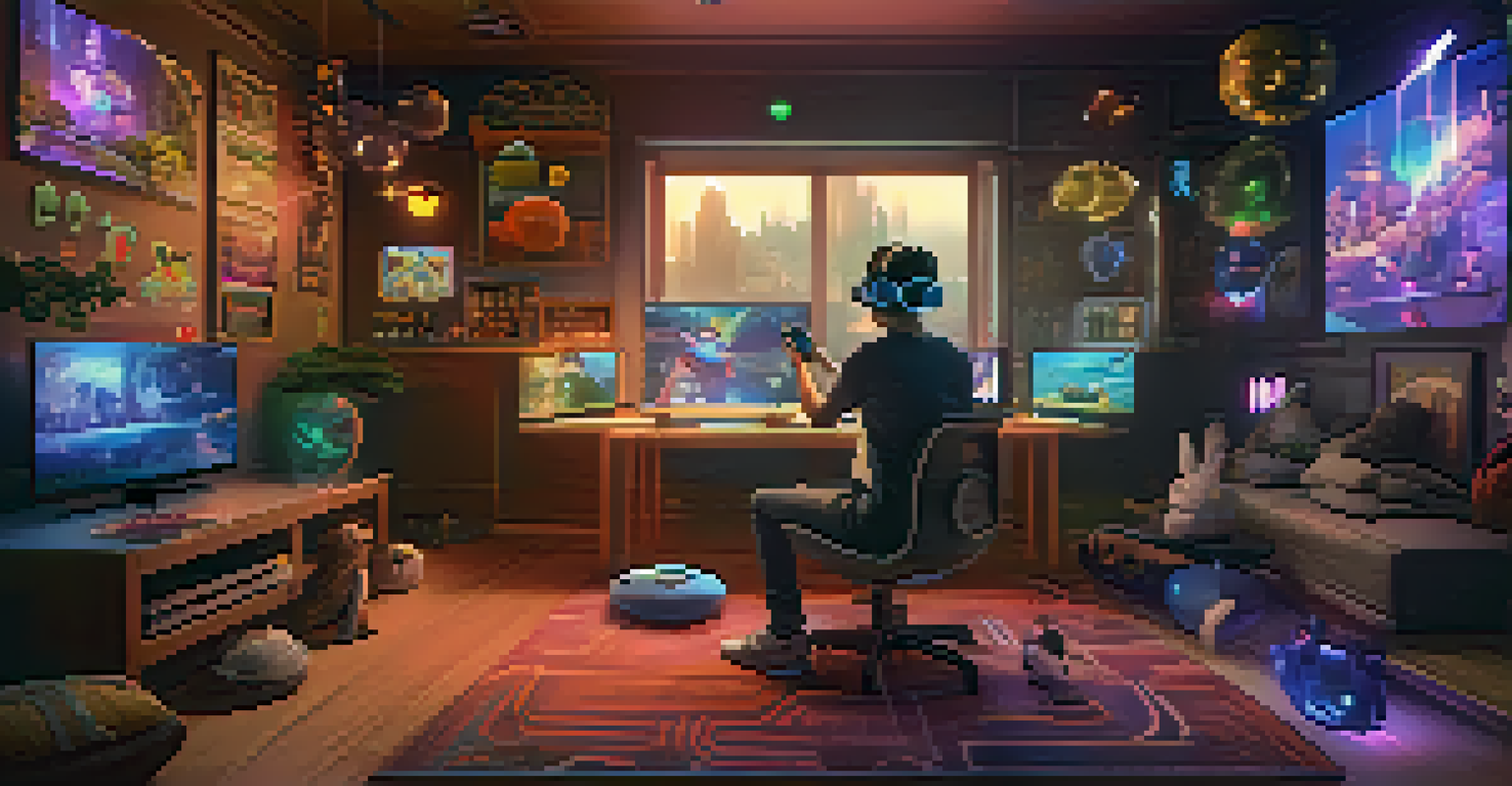Bridging the Gap: Connecting Real-World Value to In-Game Items

Understanding the Value of In-Game Items
In-game items often have a perceived value that goes beyond mere pixels. Players invest time and money into acquiring these items, which can range from virtual pets to rare skins in a game. Just like collectibles in the physical world, these virtual items can carry significant emotional and monetary value for players.
In the world of gaming, virtual items are not just pixels; they are badges of honor, tokens of achievement, and sometimes, even investments.
For example, consider a limited edition sword in a fantasy game. To a player, this sword isn’t just a weapon; it represents hours of gameplay, dedication, and mastery. Such items can foster a sense of achievement and community among players, making them feel connected to something larger than themselves.
As the gaming landscape evolves, understanding this intrinsic value becomes crucial for developers and marketers. Recognizing that players see these items as extensions of their identity opens up new avenues for engagement and monetization.
The Rise of Digital Economies in Gaming
Digital economies have transformed how players interact with in-game items, creating a marketplace that mirrors real-world economies. This shift allows players to buy, sell, and trade items, establishing a tangible value tied to their in-game assets. With platforms like Steam and Fortnite’s V-Bucks, players can see the financial potential of their digital possessions.

Imagine a player selling a rare skin for a few hundred dollars; this not only validates their time investment but also introduces a new layer of strategy to gameplay. Players are now incentivized to accumulate and manage their virtual assets as they would with stocks or real estate.
In-Game Items Hold Real Value
Players see in-game items as extensions of their identity, investing time and money into acquiring them.
This burgeoning digital economy raises questions about ownership and value, sparking discussions about how these virtual goods can and should be integrated into the real world.
NFTs: Bridging Virtual and Real-World Value
Non-fungible tokens (NFTs) have emerged as a revolutionary concept linking in-game items to real-world value. These digital tokens provide proof of ownership and authenticity, allowing players to buy, sell, and trade their virtual assets securely. In gaming, this means that a rare item could be sold for significant amounts, just like a collectible artwork.
The value of a digital item is not just in its rarity, but in the community that surrounds it and the experiences it creates.
Consider a player who owns an NFT representing a unique character skin. This NFT not only proves their ownership but can also appreciate over time, similar to how rare coins or baseball cards might. This potential for appreciation adds a new layer of excitement for players, who can now see their virtual possessions as investments.
However, the NFT market is not without controversy, and discussions around sustainability and accessibility are ongoing. As this technology continues to evolve, it could redefine how we perceive value in the gaming world.
The Role of Community in Valuing In-Game Items
Community plays a pivotal role in establishing the value of in-game items. Players often come together in forums, social media, and game servers to discuss and determine what makes an item desirable. This collective sentiment can drive prices up or down, similar to how trends affect market values in the real world.
For instance, if a popular streamer showcases a specific item, the demand can skyrocket, leading to increased trading and selling activity. This phenomenon highlights how community dynamics influence the perceived value of virtual goods.
Digital Economies Shape Gameplay
The rise of digital economies allows players to buy, sell, and trade items, establishing tangible value for their virtual assets.
Understanding these community-driven factors is essential for developers. By fostering a vibrant community, they can enhance the significance of their in-game items, ultimately bridging the gap between virtual and real-world value.
Real-World Influences on In-Game Item Pricing
Just like stocks are influenced by economic factors, in-game item prices can fluctuate based on real-world events. For example, a game might introduce a popular crossover event with a blockbuster movie, leading to an increase in demand for related items. Players may rush to buy or trade these items, affecting their market value.
Additionally, trends in the gaming industry, such as emerging game genres or new technological advancements, can also impact how players value in-game items. A new game engine might make certain items obsolete or create a new category of collectibles.
Recognizing these influences allows players and developers alike to navigate the marketplace more strategically, ensuring they make informed decisions about their digital assets.
Legal Considerations in Valuing In-Game Items
As the line between virtual and real-world value continues to blur, legal considerations around in-game items are becoming increasingly relevant. Issues of ownership, copyright, and consumer rights are at the forefront of discussions in the gaming industry. Players need to understand their rights regarding the items they purchase, especially as virtual items can sometimes carry real monetary value.
For example, if a player spends money on a skin that is later removed from the game, questions arise about whether they should be compensated. This ongoing debate underscores the complexities of valuing in-game items in a rapidly evolving digital landscape.
Community Drives Item Valuation
Community dynamics heavily influence the perceived value of in-game items, as collective sentiment can affect demand and pricing.
Developers must navigate these legal waters carefully to protect both their interests and those of their players. Establishing clear guidelines can help build trust and foster a more sustainable digital economy.
Future Trends in Valuing In-Game Items
Looking ahead, the valuation of in-game items is likely to evolve with emerging technologies and changing player behaviors. As virtual reality and augmented reality continue to gain traction, the ways players interact with in-game items might transform dramatically. Imagine a future where physical and digital worlds seamlessly blend, allowing players to carry their in-game items into real-life experiences.
Furthermore, as more players recognize the potential of digital ownership, we could see a rise in the demand for unique, customizable in-game items that reflect personal identity. This trend may encourage developers to create more diverse and inclusive options, fostering a sense of belonging among players.

The future of in-game item valuation is not just about financial worth; it’s about creating meaningful connections that enhance the overall gaming experience. As we continue to explore these trends, one thing is clear: the relationship between virtual and real-world value will only grow stronger.